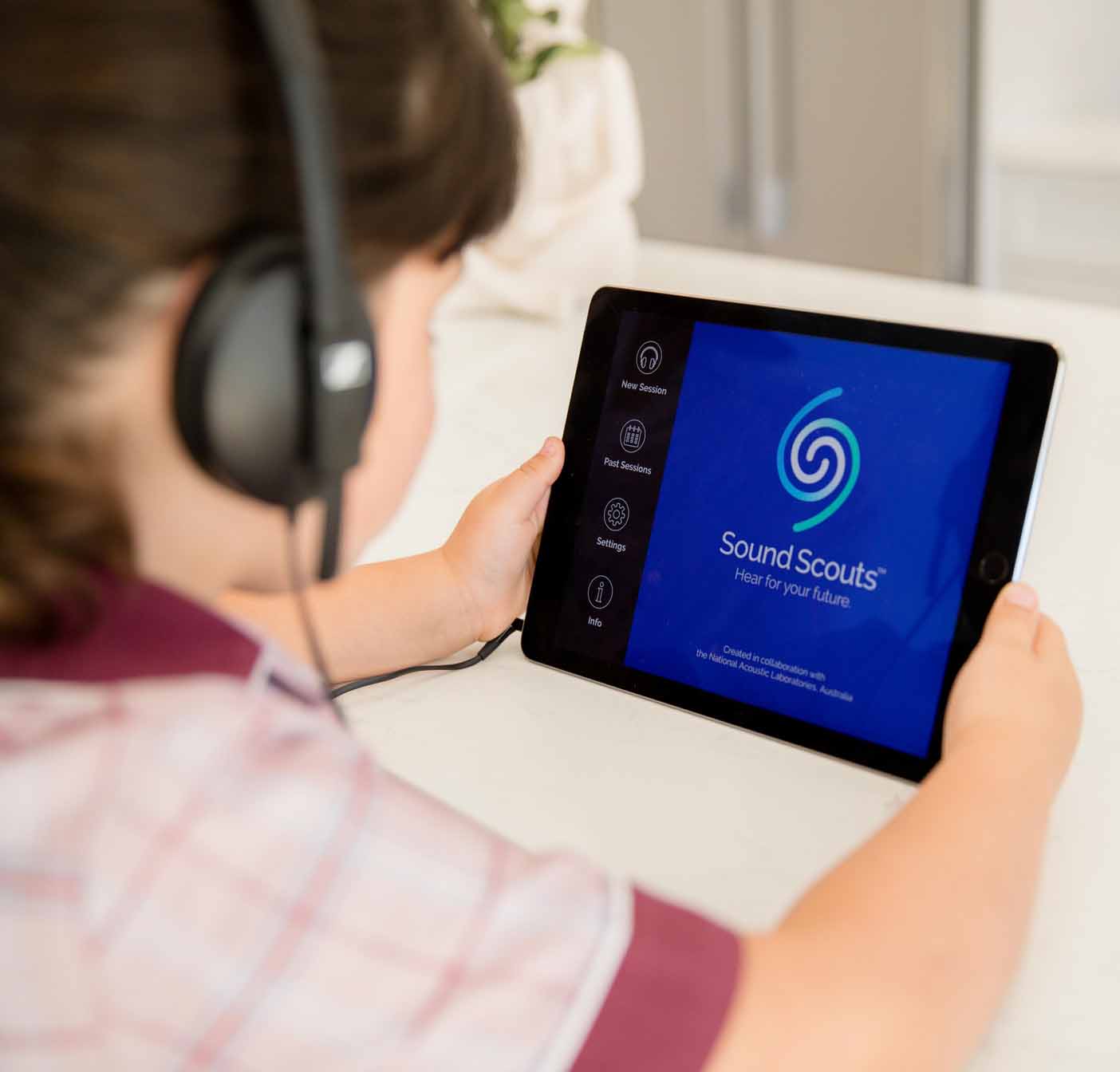Evidence
Published Science
The science of Sound Scouts has been published in the International Journal of Audiology; “Hearing tests are just child’s play: the Sound Scouts game for children entering school”
Objective: To create a hearing test useable without the involvement of a clinician or calibrated equipment, suitable for children aged 5 or older.
Design: The tablet-based app (Sound Scouts) includes tests of speech in quiet, speech in noise and tones in noise, all embedded in game designed to maintain engagement. Data was collected to intelligibility-equalize the stimuli, establish normative performance, and evaluate the sensitivity with which Sound Scouts detected known hearing problems and identified their type.
Study sample: Participants were children from age 5 to 14 (394 with normal hearing, 97 with previously identified hearing loss) and 50 adults with normal hearing.
Results: With pass-fail criteria set such that 98% of children with normal hearing passed Sound Scouts, 85% of children with hearing loss failed Sound Scouts (after exclusion of children in either group who received an inconclusive result or had incomplete results). No child with four-frequency average hearing thresholds of 30 dB HL or greater in their poorer ear passed Sound Scouts. Hearing >loss type was correctly identified in only two-thirds of those cases where the algorithm attempted to identify a single type of loss.

Conclusions: Sound Scouts has specificity and sensitivity sufficiently high to provide hearing screening around the time children typically enter school.
Other Publications
"108 primary school aged children; 55 from Grade 3 and 53 from Grade 5 participated in this study. Children completed both a listening skills assessment, using the Sound Scouts platform and the National Assessment Program - Literacy and Numeracy (NAPLAN)."
"A significant interaction between speech-in-noise ability and reading was seen in the combined cohort…This highlights the importance of identifying not only the role that noise itself plays in learning, but the skills that support the ability to manage classroom listening environments. This research has implications for early hearing screening programs, teaching approaches, and interventions focused on enhancing the learning environment for all students"
"111 children (8.84%) presented with evidence of middle/outer ear pathologies. 21 children (1.67%) had hearing loss in at least one ear. 30 children (2.52%) were diagnosed with spatial processing disorder. False positive rate was 5.01%, indicating that a relatively small proportion of the children who failed the screenings were subsequently shown to have normal auditory function."
"Acceptable threshold differences of ≤5 dB between AutoAud and manual audiometry hearing thresholds were found for 88% of thresholds, with a greater agreement for older than for younger children. Consistent pass/fail results on the Sound Scouts speech-in-quiet measure and manual audiometry were found for 81% of children. Consistent pass/fail results on the Sound Scouts speech-in-noise measure and LiSN-S high-cue condition were found for 73% of children."
"It was estimated that Sound Scouts would result in an average incremental cost of A$316 and an average incremental increase in quality adjusted life years (QALYs) of 0.07. This resulted in an ICER of around A$4,472 per QALY gained, which is likely to be considered ‘cost-effective’. The cost-effectiveness acceptability curve indicated that screening with Sound Scouts has a 95% probability of being cost-effective using a threshold of A$60,000 per QALY."
